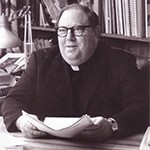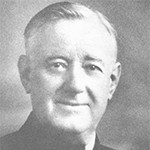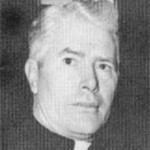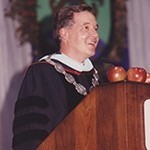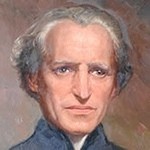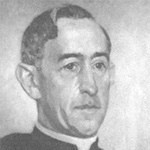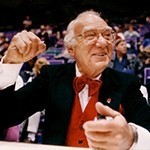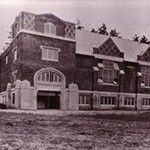 With the construction of Dundon-Berchtold Hall well underway, it might be a good time to look back on the building site’s original occupant, Howard Hall. The following passages are from Jim Covert’s 1976 University history, A Point of Pride:
With the construction of Dundon-Berchtold Hall well underway, it might be a good time to look back on the building site’s original occupant, Howard Hall. The following passages are from Jim Covert’s 1976 University history, A Point of Pride:
“The University constructed one building and demolished another during that era [1922-1935]. Due to the severe winter snowstorm in 1916 and subsequent damages as a result of Oregon’s “silver thaws” Columbia Colosseum was regarded as unsafe. Obviously a new athletic center was needed and enthusiasm for a new facility apparently began when Melvin Schulmerick, an outstanding athlete, wrote an article wrote an article in a 1923 issue of The Columbiad entitled: “How About the New Gymnasium?” Officials launched a fund drive in 1926 with the provincial, Rev. Charles O’Donnell, promising a major portion of the money if sufficiently matched by Columbia benefactors. Plans were drawn up for a modern structure serving as a combination gymnasium-auditorium containing a large tile swimming pool and regulation basketball court with a stage at one end for convocations and drama presentations, a bleacher and balcony capacity for about 2,500 spectators, and other necessary facilities on the lower level such as lockers, showers, and dressing rooms.
“Pledges turned into hard cash and construction began on a site next to the rickety Colosseum. The cornerstone ceremony occurred on November 20, 1927. On February 19, 1928, The Sunday Oregonian reported that a “formal housewarming of Howard Hall” would be held that evening; Archbishop Edward Howard officiated at the dedication of the building named in his honor, with many former Columbia athletes in attendance. Now aged, it is sometimes difficult to realize that in 1928, Howard Hall was a splendid edifice that cost nearly $80,000 (a goodly sum in those days), but from the very first the roof leaked and it still does. Ironically, because of a destructive east wind the following year, old Columbia Colosseum had to be dismantled, almost as if the two buildings standing side by side dared not share the future together.
“In retrospect, the sense of prosperity of the 1920s coupled with the determination to build Columbia into a ‘Notre Dame of the West’ reached a crescendo in 1927, triggered by the successful fund drive for Howard Hall. On the front page of the Oregon Journal on December 8, 1927, a lead article announced Columbia’s plans to raise $4,000,000 in an ambitious building campaign to be carried out over a decade. According to the newspaper: ‘Plans contemplate raising the university to the rank of Notre Dame….’ Although difficult to believe that the idea as outlined could be regarded as feasible, the plan proposed a total rearrangement of the campus, keeping only Christie and Howard halls. West Hall was to be razed making room for a University chapel—a ‘major architectural piece’ in modified Gothic with its towers to be ‘a landmark for the entire city.’ Other buildings were to follow, divided by picturesque quadrangles with each proposed structure an integral part of a master campus design.”
Howard Hall served as the main gathering place on campus for decades to come. Varsity as well as pickup basketball games echoed through the main floor; athletics offices wound their way up three stories; the basketball court was used for clandestine Portland Trailblazers practices in the 1970s and 1980s; a very popular recurring event was the UP Smoker, with students competing in boxing as well as wrestling matches in a haze of cigarette and cigar smoke. Fire broke out at least twice over the years, causing serious damage to the basketball court and swimming pool roof. Commencement ceremonies were held there until it became necessary to move to the downtown Civic (now Keller) Auditorium. The gymnasium was also used for appearances and speeches by a number of figures, including presidential candidate John F. Kennedy in 1960; Senator Wayne Morse; comedians Milton Berle, Martin Mull, and future U.S. Senator Al Franken and his partner Tom Davis; Watergate figure G. Gordon Liddy, and hundreds of prominent members of academia from around the world. In its later years, Howard Hall was used to film episodes of the popular TV series Grimm, turned temporarily into a gritty, rowdy Luca Libre wrestling arena. On occasions when Masses were celebrated for gatherings larger than St. Mary’s Chapel could accommodate, the Sacrament of the Eucharist was celebrated on the Howard Hall stage as well.
All in all a storied past for an often maligned yet affectionately remembered campus landmark.
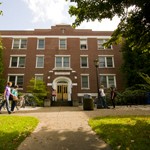 June 8, 1911 saw the groundbreaking for Christie Hall, at a ceremony attended by Portland archbishop Alexander Christie, the building’s namesake, who turned the first spadeful of earth himself.
June 8, 1911 saw the groundbreaking for Christie Hall, at a ceremony attended by Portland archbishop Alexander Christie, the building’s namesake, who turned the first spadeful of earth himself.